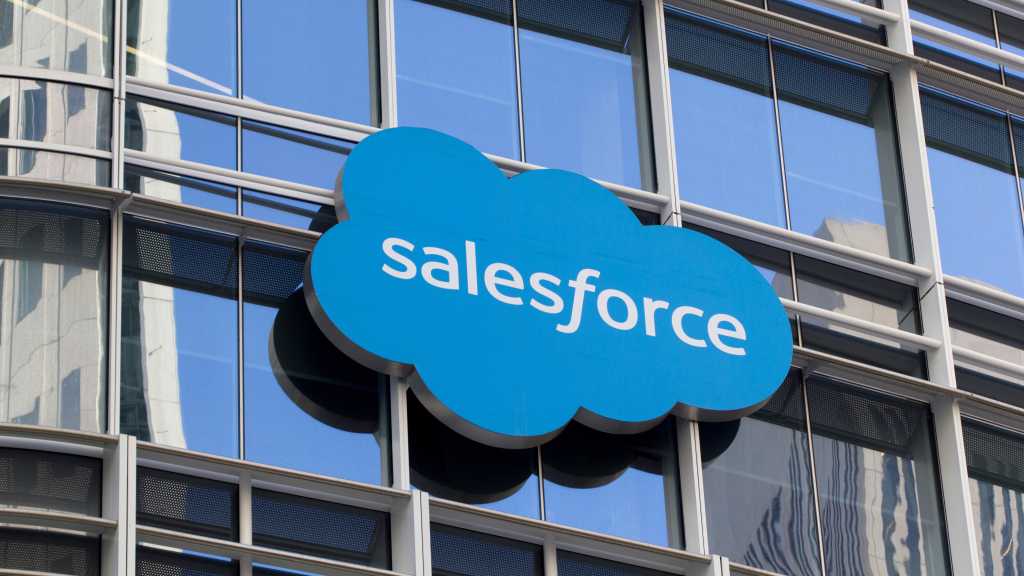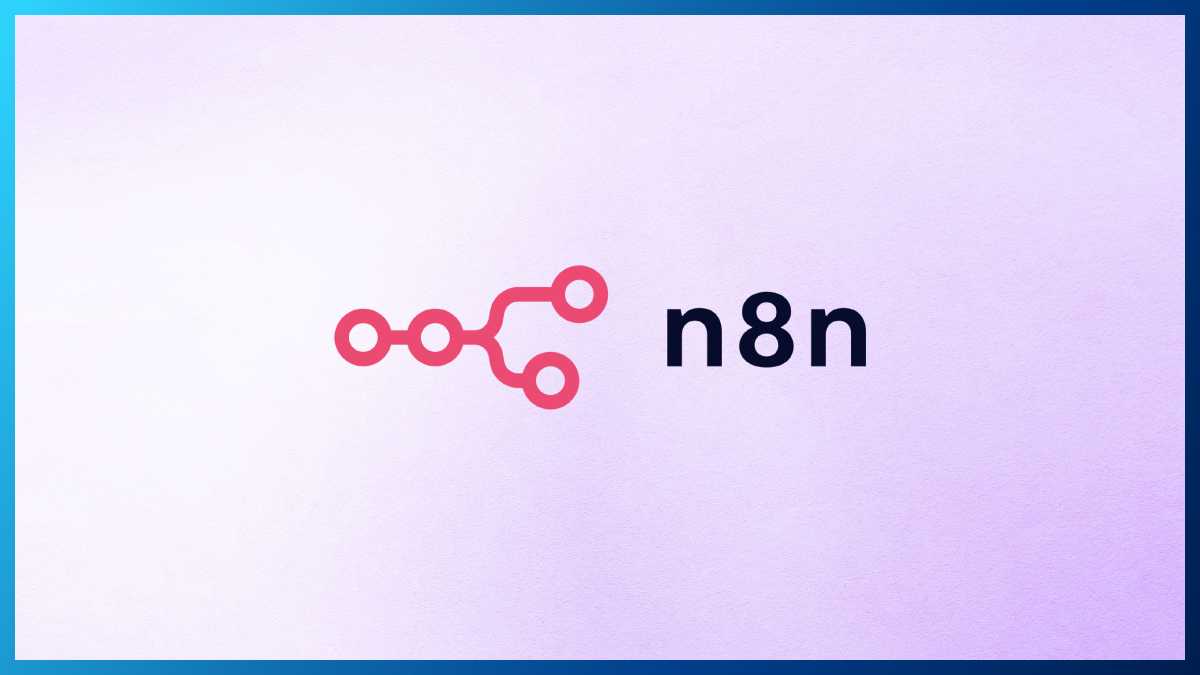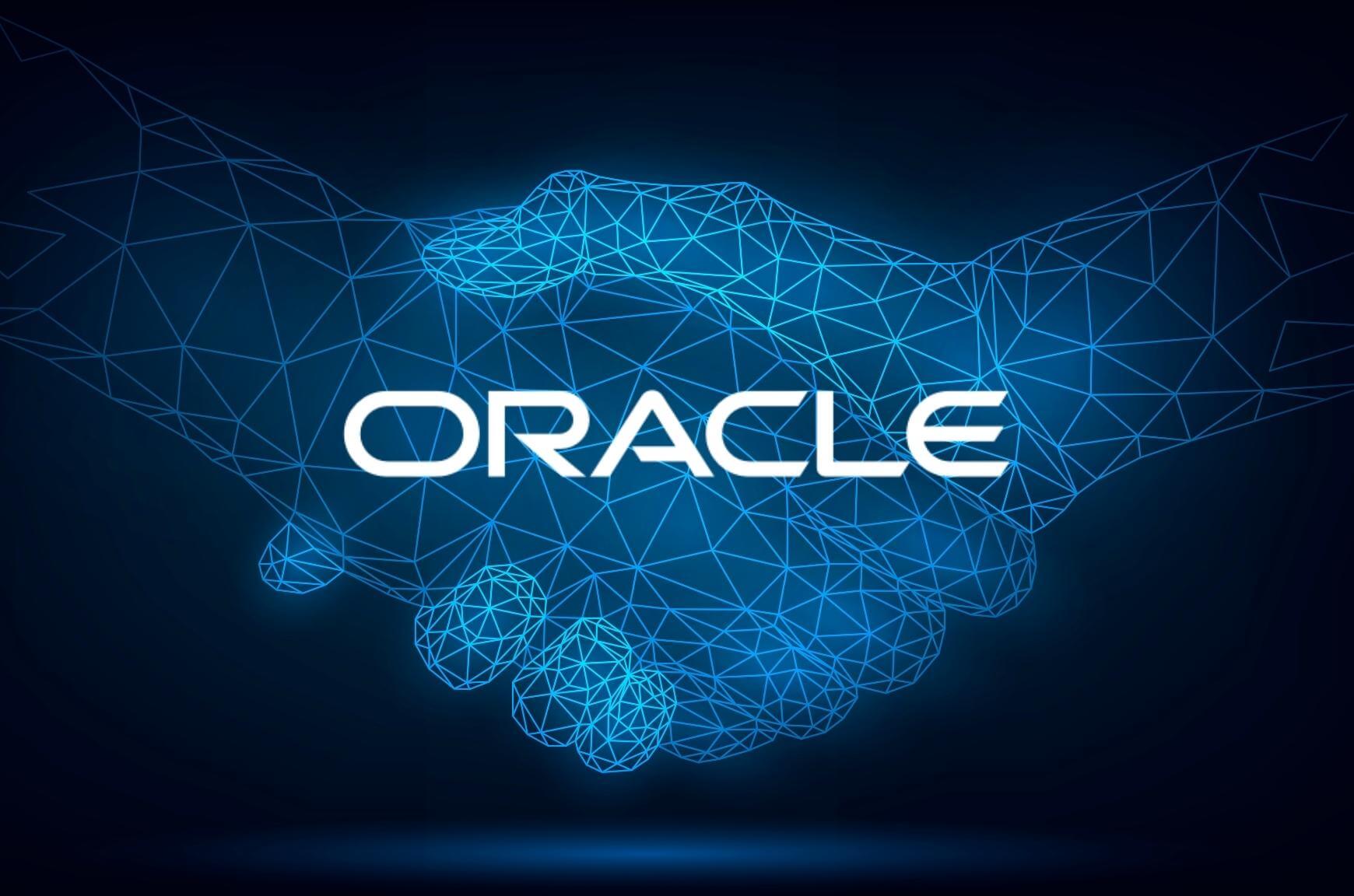This massive deployment, announced at the Oracle AI World event, represents a strategic partnership between Oracle and AMD that aims to reshape the competitive landscape of AI infrastructure.
The Oracle AI supercluster will integrate cutting-edge AMD Instinct MI450 GPUs into Oracle Cloud Infrastructure (OCI), creating a powerhouse capable of handling the most demanding AI workloads. With deployment scheduled for Q3 2026, this initiative positions Oracle to compete directly with established players like Google, Microsoft, and Nvidia in the race for AI supremacy.
This is an important moment in cloud computing history. The combination of 50,000 high-performance GPUs, advanced networking technologies, and optimized processors promises to deliver unprecedented capabilities for training and deploying generative AI models, transforming how enterprises approach artificial intelligence development.
The Oracle and AMD Partnership : A Game Changer for AI Infrastructure
The Oracle AMD partnership is a strategic alliance between two technology giants who are dedicated to reshaping AI infrastructure. This collaboration, which was further strengthened at the Oracle AI World event, focuses on developing supercomputing capabilities that can handle the most demanding AI workloads on an unprecedented scale.
Building Blocks of the Partnership
At the core of this partnership is the integration of AMD EPYC processors, specifically the next-generation Venice EPYC architecture, working alongside the Instinct MI450 GPUs. This combination of processor and GPU creates a unified computing environment where :
- Venice EPYC processors deliver exceptional core performance and memory bandwidth
- Seamless coordination between CPU and GPU resources maximizes computational efficiency
- Optimized data pathways reduce latency between processing units
Enhancing Cloud Capabilities with Pensando Networking Technology
The infrastructure also benefits from Pensando networking technology, which Oracle acquired to improve its cloud capabilities. This networking layer revolutionizes how data flows through the supercluster :
- Accelerated data throughput enables faster model training cycles
- DPU-based converged networking handles complex workload orchestration
- Intelligent traffic management prevents bottlenecks during peak computational demands
Creating an Ecosystem of Amplified Strengths
This three-pronged approach combining advanced processors, cutting-edge GPUs, and intelligent networking establishes an ecosystem where each component enhances the strengths of the others. The architecture doesn't simply add components together; it multiplies their effectiveness through deep integration and optimization at every level.
Unleashing the Power of the AMD Instinct MI450 GPU
The AMD Instinct MI450 GPU specs reveal a powerhouse designed specifically for enterprise-scale AI deployments. At the heart of this accelerator lies up to 432GB of HBM4 memory, a significant increase in capacity that allows you to load and process massive datasets without constant memory shuffling. This isn't just a small improvement you're looking at memory capacity that fundamentally changes what's possible with in-memory AI model training.
Memory Capacity That Changes the Game
The MI450's 432GB of HBM4 memory is a game-changer for in-memory AI model training. With this much memory, you can :
- Load and process larger datasets
- Train more complex models
- Reduce the need for data preprocessing
This means you can achieve better results faster, without having to spend time and resources on data preparation.
Faster Training and Inference with High Bandwidth
The GPU memory bandwidth 20 TB/s specification deserves special attention. When you're training large language models or running complex generative AI workloads, data movement becomes your primary bottleneck. The MI450's 20TB/s throughput means your GPU cores spend less time waiting for data and more time crunching numbers. You'll see this translate directly into faster training iterations and reduced inference latency for production workloads.
Optimizing Workloads with ROCm
The ROCm software stack ties everything together, acting as the orchestration layer that maximizes hardware utilization. ROCm handles :
- Dynamic workload allocation across multiple GPUs
- Memory management optimization for large-scale training jobs
- Kernel fusion to reduce overhead in neural network operations
- Multi-GPU synchronization for distributed training scenarios
You get fine-grained control over how your AI workloads leverage the MI450's capabilities, with profiling tools that help you identify and eliminate performance bottlenecks in your training pipelines.

Oracle Cloud Infrastructure (OCI) : The Backbone of AI Superclusters
Oracle Cloud Infrastructure OCI provides the architectural foundation that makes deploying massive AI superclusters possible. When Oracle plans to deploy 50,000 AMD Instinct MI450 GPUs for its artificial intelligence supercluster by 2026, you're looking at infrastructure that needs to handle unprecedented scale and complexity.
The platform's design centers on delivering cloud-based AI solutions that can support enterprise-grade workloads without compromise. OCI's architecture integrates seamlessly with AMD's hardware innovations, creating an environment where GPU resources operate at peak efficiency. You get direct access to bare metal performance combined with cloud flexibility a combination that traditional cloud providers struggle to match.
OCI Compute services are expanding beyond the MI450 deployment. The upcoming availability of GPU Instinct MI355X GPUs will push total capacity to over 131,000 GPUs across Oracle's infrastructure. This expansion gives you multiple GPU options based on your specific workload requirements, whether you're training massive language models or running inference at scale.
The platform's workload management capabilities separate it from competitors. OCI implements intelligent resource allocation that automatically distributes AI tasks across available GPU clusters. You can partition GPU resources dynamically, ensuring your applications receive exactly the compute power they need when they need it. This granular control prevents resource waste while maintaining consistent performance across concurrent workloads.
Advanced scheduling algorithms within OCI predict resource demands and pre-allocate capacity, reducing latency for time-sensitive AI operations.
The AMD Helios Rack : A Marvel of Performance Density and Energy Efficiency
The AMD Helios rack is a game-changer for data centers, specifically designed to meet the high computational needs of today's AI workloads. Each rack can hold up to 72 GPUs, providing an incredible amount of computing power in a small space, which changes how businesses handle large-scale machine learning tasks.
This setup solves a major problem you face when trying to expand your AI infrastructure : limited physical space. Traditional GPU setups need large data center spaces, but the Helios rack packs a lot of computing power into a smaller size. This means you can install thousands of GPUs without having to increase the size of your facility.
Overcoming Thermal Challenges with Liquid Cooling
The liquid cooling system built into the Helios rack tackles the heat issues that come with having many GPUs in close quarters. Air cooling simply can't keep up with the heat produced by 72 powerful GPUs running at the same time. The liquid cooling system keeps everything at the right temperature while using much less energy than traditional cooling methods.
Boosting Energy Efficiency Beyond Cooling
Energy efficiency goes beyond just managing heat. The design of the Helios rack also lowers the amount of power used for each unit of computing, which means lower operating costs and less impact on the environment. This leads to reduced electricity bills and better sustainability metrics both important factors when running large AI systems.
Accelerating Deployment and Reducing Costs
The architecture of the rack allows Oracle to fit more computing power into their existing data center spaces, speeding up deployment times and lowering infrastructure costs. This advantage becomes even greater when you think about Oracle's plan to set up 50,000 MI450 GPUs across several Helios racks.

Supercharging Advanced Language Models and Generative AI with Scalable Compute Resources
The 50,000 MI450 GPU deployment transforms how you'll approach training and inference for cutting-edge language models. You're looking at unprecedented parallel processing capabilities that slash training times for models with hundreds of billions of parameters. The 432GB HBM4 memory per GPU means you can load massive model architectures directly into GPU memory, eliminating bottlenecks that traditionally slow down generative AI development.
Scaling AI compute resources reaches new heights when you compare Oracle's approach to established players :
- Nvidia DGX SuperPOD : Typically scales to 20-32 DGX systems with H100 GPUs, offering excellent performance but at premium pricing
- Google TPU Pods : Optimized specifically for TensorFlow workloads, providing strong performance in Google's ecosystem
- Oracle's MI450 Supercluster : Delivers 50,000 GPUs with 20TB/s memory bandwidth per unit, creating flexibility across diverse AI frameworks
The complexity of advanced language models grows exponentially with each generation. You need infrastructure that adapts to multi-modal models, retrieval-augmented generation systems, and real-time inference demands. Oracle's architecture addresses this through the ROCm software stack, which intelligently distributes workloads across thousands of GPUs simultaneously. You gain the ability to experiment with novel architectures without hitting resource constraints that typically force compromises in model design or training strategies.
Oracle's Competitive Edge Against Google, Microsoft, and Nvidia
Oracle plans to deploy 50,000 AMD Instinct MI450 GPUs for its artificial intelligence supercluster by 2026, positioning itself as a formidable challenger in the AI market competition. The sheer scale of this deployment rivals the Nvidia DGX SuperPOD installations currently dominating enterprise AI infrastructure, yet Oracle brings a distinctive approach to the table.
Hardware Scale and Integration Advantages
The Oracle-AMD partnership delivers a unique technological stack that differentiates it from competitors :
- Unified Architecture : The tight integration between AMD EPYC Venice processors and Instinct MI450 GPUs creates optimized data pathways that reduce latency compared to mixed-vendor solutions
- Memory Superiority : With 432GB HBM4 per GPU and 20TB/s bandwidth, Oracle's configuration surpasses many competing offerings in memory-intensive AI workloads
- Pensando Networking : The proprietary DPU-based networking infrastructure accelerates inter-GPU communication beyond standard InfiniBand implementations
Reshaping Cloud AI Service Dynamics
Oracle's massive GPU deployment strategy disrupts the established hierarchy where Microsoft Azure, Google Cloud, and AWS have traditionally dominated. You gain access to enterprise-grade AI infrastructure without the vendor lock-in typically associated with Nvidia-exclusive ecosystems.
The AMD ROCm software stack provides flexibility in workload optimization, while the combination of liquid-cooled Helios racks and advanced GPU partitioning delivers cost efficiencies that translate into competitive pricing for OCI customers.

Looking Beyond 2026 : Oracle's Vision for the Future of AI Infrastructure
Oracle's plan goes far beyond the initial launch phase, with Q3 2026 being just the start of a multi-year strategy for growth. The company has laid out a methodical plan to expand its GPU infrastructure, beginning with the addition of 50,000 AMD Instinct MI450 GPUs and gradually increasing capacity in the following quarters. This step-by-step implementation allows Oracle to improve its infrastructure while meeting the increasing needs of enterprise customers.
The architecture supporting these future expansions Oracle GPU compute capacity relies heavily on accelerated DPU-based converged networking. This technology enables dynamic resource allocation across thousands of GPUs, ensuring that computational power scales efficiently without creating bottlenecks. Advanced GPU partitioning plays a critical role here, allowing multiple workloads to share GPU resources while maintaining isolation and performance guarantees. You can run diverse AI applications simultaneously without compromising the efficiency of individual tasks.
Oracle's commitment to continuous hardware and software ecosystem upgrades positions the platform for emerging AI capabilities. The ROCm software stack receives regular enhancements that unlock new optimization techniques and support for next-generation AI frameworks. As AMD releases successive GPU generations beyond the MI450 series, Oracle's infrastructure can seamlessly integrate these advancements. This forward-looking approach ensures that enterprises investing in OCI today won't face obsolescence as AI technology evolves, instead gaining access to cutting-edge capabilities through regular platform updates.
Conclusion
Oracle's plans to deploy 50,000 AMD Instinct MI450 GPUs for its artificial intelligence supercluster by 2026 represents a defining moment in Oracle AI infrastructure transformation. This strategic move will reshape how enterprises approach large-scale AI development and deployment.
The combination of AMD's cutting-edge GPU technology, EPYC processors, and Oracle's robust cloud infrastructure creates an ecosystem where you can:
- Train massive language models
- Develop sophisticated generative AI applications
- Scale workloads without the traditional constraints of limited compute resources
Your enterprise stands to benefit from :
- Access to unprecedented GPU capacity through OCI Compute services
- Cost-effective AI development through optimized resource allocation
- Flexibility to scale from prototype to production seamlessly
- Advanced networking and memory bandwidth for demanding workloads
The competitive landscape has shifted. You now have a viable alternative to established players, backed by Oracle's commitment to continuous infrastructure evolution. This supercluster isn't just about raw compute power—it's about giving you the tools to innovate faster, experiment boldly, and bring AI solutions to market with confidence.
FAQs (Frequently Asked Questions)
What is Oracle's plan for deploying AMD Instinct MI450 GPUs in their AI supercluster by 2026 ?
Oracle plans to deploy 50,000 AMD Instinct MI450 GPUs as part of its artificial intelligence supercluster by 2026. This ambitious deployment aims to revolutionize AI capabilities and cloud computing, positioning Oracle as a key player in the competitive AI market.
How does the partnership between Oracle and AMD enhance AI infrastructure ?
The strategic collaboration between Oracle and AMD integrates next-generation AMD EPYC processors (Venice EPYC) with Instinct MI450 GPUs, optimized for high-performance AI workloads. Additionally, Pensando networking technology is used to accelerate data throughput and manage workloads efficiently, making it a game changer for AI infrastructure.
What are the key technical features of the AMD Instinct MI450 GPU ?
The AMD Instinct MI450 GPU features up to 432GB of HBM4 high-bandwidth memory and delivers an impressive 20TB/s memory bandwidth, essential for demanding AI workloads and generative models. It leverages the ROCm software stack to maximize GPU utilization and optimize workload allocation.
How does Oracle Cloud Infrastructure (OCI) support large-scale AI superclusters ?
OCI serves as the backbone for deploying large-scale AI superclusters by providing advanced compute resources, including upcoming availability of GPU Instinct MI355X GPUs expanding capacity beyond 131,000 GPUs. OCI also employs advanced workload management strategies that enable efficient scaling of complex AI applications.
What makes the AMD Helios rack suitable for AI workloads in Oracle's deployment ?
The AMD Helios rack supports up to 72 GPUs per rack and incorporates liquid cooling systems to ensure energy efficiency and effective thermal management at scale. Its high-density design reduces data center footprint while boosting compute power, making it ideal for intensive AI workloads.
How does Oracle’s AI supercluster compare with competitors like Nvidia DGX SuperPOD and Google TPU Pods ?
Oracle’s supercluster, powered by a massive deployment of AMD Instinct MI450 GPUs combined with EPYC processors and advanced networking, offers scalable compute resources that accelerate training and inference of advanced language models and generative AI. This positions Oracle competitively against Nvidia DGX SuperPOD and Google TPU Pods in terms of hardware scale, performance, and technology integration within cloud-based AI services.




